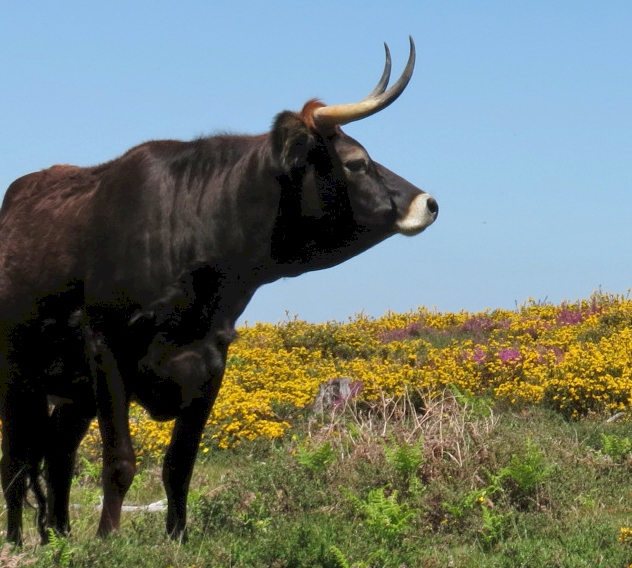The Maronesa breed of mountain cattle, traditionally found in the northern regions of Portugal, is named after the Serra do Marão. With its primary use being for draught power, this breed is valued for its strength and hardiness.
The origin of the Maronesa breed of cattle is a topic of controversy and its clarity is lacking. Historical evidence suggests that it was formed through cross-breeding of the Barrosã and Mirandesa breeds and was considered a cross-breed until 1835. The intermediate frequency of the 1/29 Robertsonian translocation in the Maronesa breed supports this idea, but a 1998 study found it to have a substantial genetic distance from the Barrosã and Mirandesa and all other breeds of northern Portugal and Galicia. In 2004, micro-satellite analysis showed the Maronesa breed to be closest in genetic grouping with the Barrosã. The breed was formerly numerous in the Douro, Minho, and Trás-os-Montes regions, particularly in the Serra do Alvão, Serra da Padrela, and Serra do Marão, but no census data from before 1940 is available. In 1940, over 25,000 head of Maronesa cattle were counted and in 1955 there were 32,252 registered, with numbers later declining.
The formation of a breeders' association by fourteen breeders took place in 1988 and the initiation of a breed register was also done in the same year. An increase in the number of farmers rearing the breed to almost 1500 was recorded by 1996. In 2008, the breed was officially approved by the Direção Geral de Veterinária and the breed register became a genealogical herd-book.
The FAO labeled the Maronesa as "not at risk" in 2007. By the end of 2016, 4777 breeding cows were registered with a total estimated population of 8300-9900. However, the declining number of breed keepers, their increasing mean age, and changes in tax regulations pose threats to the Maronesa.
The Maronesa breed displays rustic features and has morphological similarities to the Portuguese fighting bull, the Brava de Lide. Mature bulls are larger, have a more heavily muscled neck, and show more development in the foreparts compared to cows and bullocks. This breed shows marked sexual dimorphism.
The Maronesa is usually black with a chestnut stripe. Its muzzle and mucosa are black and it has a pale ring around the muzzle. The head is broad and short, with a straight profile. The horns extend horizontally, then turn forward and downward. The dewlap is prominent. In cows, the udder is covered in fine hair.
The traditional use of the Maronesa cattle breed was for draught power. DOP status for the beef and veal from Maronesa animals reared using eco-friendly methods in a specific area around Vila Real has been granted since 1996, and it can be marketed as "Carne Maronesa DOP". However, the calving rate for this breed is low, at approximately 75 per 100 cows.
The Maronesa has been used in attempts to recreate the aurochs, such as the TaurOs programme and Uruz project.
Content and Photo Source: Wikipedia.Org
